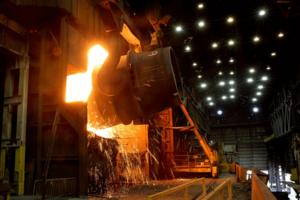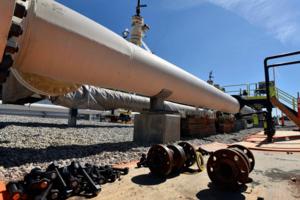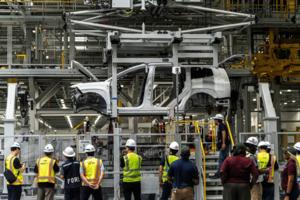Business
/ArcaMax

Microsoft urges H-1B workers to return to US after Trump executive order
SEATTLE — Microsoft urged traveling H-1B visa employees on Friday to return to the U.S. immediately in the wake of President Donald Trump’s executive order to increase visa fees to $100,000, according to internal emails.
Trump signed the executive order on Friday, claiming it will curb abuses that displace U.S. workers. The changes are set ...Read more

Trump to add new $100,000 fee for H-1B visas in latest crackdown
WASHINGTON — President Donald Trump signed a proclamation Friday that would move to extensively overhaul the H-1B visa program, requiring a $100,000 fee for applications in a bid to curb overuse.
The proclamation requires the payment and asserts that abuse of the H-1B pathway has displaced U.S. workers. The proclamation restricts entry under...Read more

Trump officials blocked US Steel from stopping work at plant
The United States blocked U.S. Steel Corp.’s plan to stop production at a plant in Illinois, according to a Trump administration official, a move highlighting the federal government’s continued influence over an iconic American firm after approving its takeover by Japan-based Nippon Steel Corp.
The action, first reported by The Wall Street...Read more
CDC backtracks on changing work-from-home accommodations
ATLANTA — Days after the Centers for Disease Control and Prevention told employees it was pausing all long-term work-from-home accommodations, the agency is reversing course, according to an email reviewed by The Atlanta Journal-Constitution.
On Tuesday, the CDC posted an internal note detailing the Department of Health and Human Services’ ...Read more

St. Louis Boeing workers sign off on union plan. Boeing unconvinced
ST. LOUIS — St. Louis-area Boeing workers on Friday signed off on a plan that could put an end to the seven-week strike hitting the company's local facilities.
Workers approved a proposal — this time written by their own union — that would provide increased pay and benefits compared to what the Boeing Co. has previously offered roughly 3,...Read more

Trump to add new $100,000 fee for H-1B visas in latest crackdown
President Donald Trump is expected to sign a proclamation as soon as Friday that would move to extensively overhaul the H-1B visa program, requiring a $100,000 fee for applications in a bid to curb overuse, according to a White House official familiar with the matter.
Trump is set to sign a proclamation Friday, requiring the payment and ...Read more

How Farm Aid actually helps farmers
In 1985, a newly minted nonprofit set up a phone number to help gather donations: 1-800-FARM-AID.
But many of the people calling weren’t offering money. They were looking for help.
“It was the first time that there seemed to be a way for farmers to connect, to seek out help,” said Farm Aid co-executive director Jennifer Fahy. “And so ...Read more

Trump, Xi Jinping hold 'very productive' talks on trade, TikTok
President Trump had what he called “a very productive” phone call with Chinese leader Xi Jinping on Friday but details were sparse about trade and a possible deal to allow TikTok to keep operating in the United States.
The leaders of the world’s two biggest economies agreed to meet in person at an upcoming Asian summit at the end of ...Read more

Trump administration wades into Michigan's Line 5 oil pipeline dispute
LANSING, Michigan — President Donald Trump's administration has waded into the future of Enbridge Inc.'s controversial Line 5 oil pipeline, arguing the state of Michigan should not be able to undermine the federal government's authority over pipelines and energy supplies.
The Department of Justice filed a statement of interest last week in ...Read more

Trump says he has a deal to save TikTok after Xi call
President Trump said Friday that he has reached a deal with China to keep the popular social video app TikTok running in the U.S.
Trump said on his social media platform Truth Social that he had a “very productive call” Friday morning with China’s President Xi Jinping. TikTok is owned by Chinese tech company ByteDance, a fact that ...Read more

In two years, Florida's Brightline has added more riders and more challenges
The first Brightline high-speed train rolled out of Orlando’s airport at dawn on Sept. 22, 2023, and headed for Miami, tugging four coach cars filled with hundreds of exuberant passengers peering out spacious windows.
Orlando Mayor Buddy Dyer called it “historic” and “one of the days we live for” during a celebration filled with ...Read more

Auto review: 2025 Lamborghini Urus SE is a Powerhouse
Lamborghini makes some of the most desirable cars in the world, coveted for the power beneath their hoods. Now the company has decided to throw a curveball at its fans with the 2025 Lamborghini Urus SE, a plug-in hybrid. True to the automaker's heritage, it looks exotic, different and luxurious —and it packs that Lamborghini power.
Our Verde ...Read more

Auto review: 2026 Audi A6/S6 Sportback e-tron EV is superbly engineered yet paradoxical
In an age when even your refrigerator has a Wi-Fi connection, is it any wonder that the corporate titans in Ingolstadt are introducing the 375-horsepower Audi A6 Sportback e-tron and 456-horsepower A6 Sportback e-tron Quattro EVs?
Both are rolling citadels of silence, as is their sibling, the sportier 543-horsepower S6 Sportback e-tron. Yet ...Read more

Auto review: 911 GTS goes hybrid the Porsche way: fast
PHELPS, Michigan — Two years ago at M1 Concourse’s American Speed Festival, I took my 1964 Porsche 904 GTS on track. The OG.
The first GTS (aka, Gran Turismo Sport) performance trim made by the German automaker, the wee, 1,450-pound 904 was one of 108 street-legal models built in 1964-65 to homologate Porsche for international racing. With ...Read more

California isn't backing down on offshore wind power despite Trump cancellation
California’s ambitious plan to generate clean electricity from offshore wind suffered a considerable blow recently when the Trump administration canceled nearly half a billion dollars in federal funding for the state’s largest project. But industry insiders, experts and officials told The Times they aren’t slowing the pursuit of this up-...Read more

FTC and 8 states sue Ticketmaster over fees, brokers buying tickets in bulk
The Federal Trade Commission and attorneys general representing seven states filed a lawsuit Thursday against Ticketmaster and its parent company, Live Nation Entertainment, alleging that the companies unlawfully coordinated with ticket brokers.
The lawsuit alleges that Ticketmaster allows brokers to buy tickets in bulk, despite rules the ...Read more

Race to make smartglasses relevant heats up again with new tech from Meta and Snap
More than a decade ago, pricey smart glasses that allowed people to snap photos, text and browse the web generated a lot of buzz but also resistance.
People who wore Google Glass in 2014 faced backlash over fears that the smart glasses, priced at $1,500, would secretly record people or make human interactions socially awkward. Two years later, ...Read more

Behind the decision to bench Jimmy Kimmel: Trump FCC threats and charges of corporate cowardice
On a Wednesday podcast, Federal Communications Commission Chairman Brendan Carr said ABC had to act on Jimmy Kimmel’s comments about the murder of right wing activist Charlie Kirk. “We can do it the easy way or the hard way,” the Trump appointee told right-wing commentator Benny Johnson.
The intended audience, the owners of ABC stations ...Read more

10 hybrid and EV models, 3K jobs part of Hyundai's next phase in Georgia
Hyundai Motor Co. on Thursday unveiled an ambitious growth plan to accelerate its electrified vehicle offerings in North America, a strategy that hinges on rapid expansion in Georgia.
The Korean automaker detailed a $2.7 billion expansion to its electric vehicle factory near Savannah, Georgia, which only completed its first construction phase ...Read more

CDC halts work-from-home accommodations for employees with disabilities
ATLANTA — The Centers for Disease Control and Prevention this week is pausing all long-term work-from-home accommodations, including for employees with disabilities, according to an internal note reviewed by The Atlanta Journal-Constitution.
The move comes after the CDC’s parent agency, the Department of Health and Human Services, issued an...Read more
Popular Stories
- Microsoft urges H-1B workers to return to US after Trump executive order
- CDC backtracks on changing work-from-home accommodations
- Trump officials blocked US Steel from stopping work at plant
- Trump to add new $100,000 fee for H-1B visas in latest crackdown
- Bank of America hourly workers see pay raise again, final step of long-term plan










